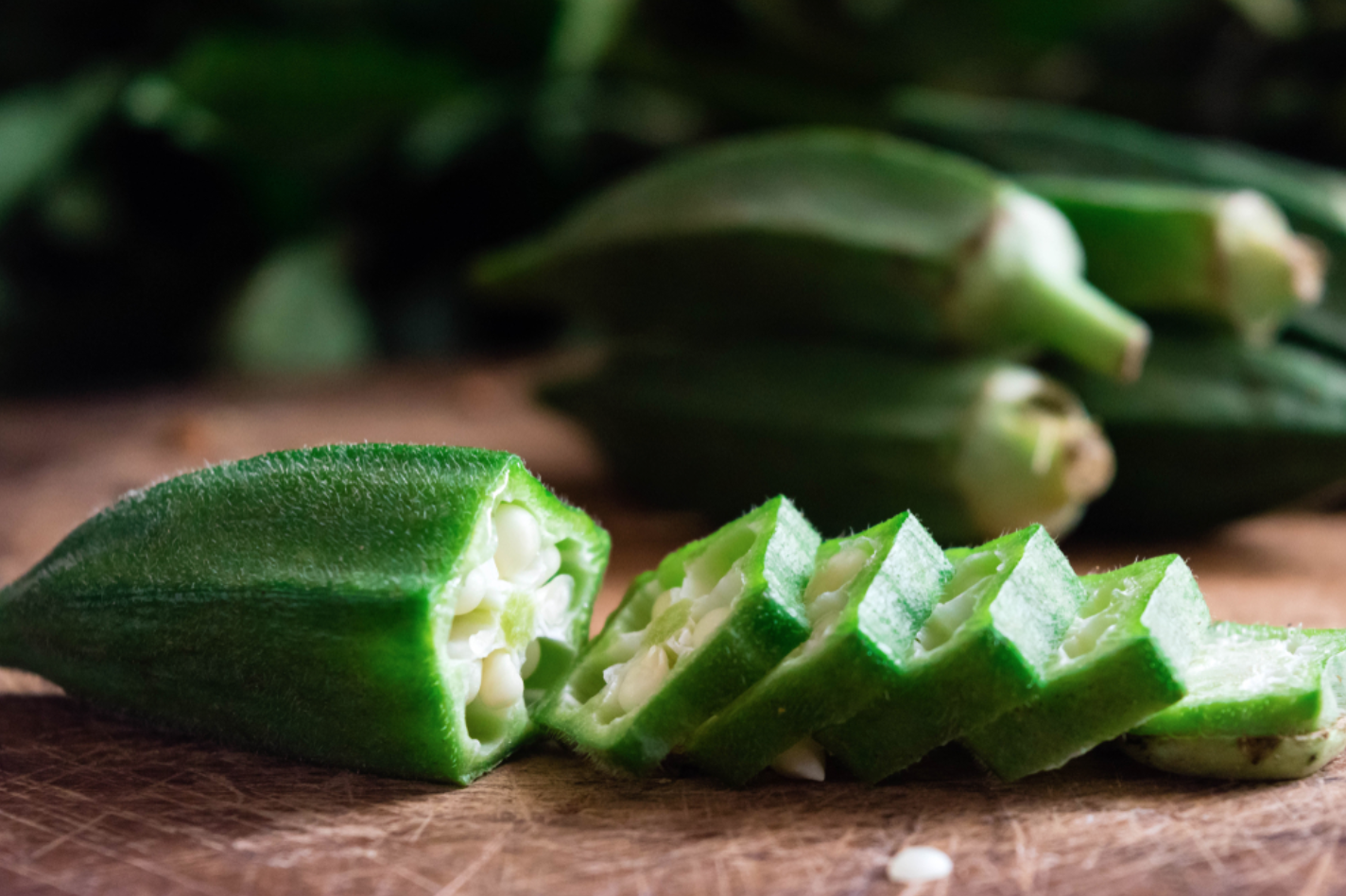
18 Oct The Whole Okra: A Seed to Stem Celebration
Article sourced from Modern Farmer
For many, okra is synonymous with slimy, fried seedy bits of “I’m not eating that.” But writer Chris Smith sees okra as something to embrace and celebrate through history and recipes. Here’s an excerpt from his just-released book.
Chef Steven Goff, who describes himself as a meat and pickle man, has honed his skills to support a belief that there should be no waste in the kitchen, a belief informed to some extent by growing up poor and living dwelling-free at the beginning of his career. In our early communications he revealed his love for okra. “Definitely one of my top five vegetables,” he said. “Last year I made okra kimchi.”
Goff is the executive chef and partner of Aux Bar in downtown Asheville, where the menu specializes in regional and seasonal ingredients from the Appalachian South. I was lucky enough to spend a morning in the kitchen with Goff and help in the creation of a fresh batch of okra kimchi.
Inspired by his experiences with the Japanese technique for making nukazuke—which uses rice bran (nuka)—Goff rolled the okra pods over a layer of coarse grain salt. This allowed the salt to penetrate the skin and begin the fermentation process without releasing the slime. As the pile of salted okra grew, it visibly sweated as the salt drew moisture out of the pods. We were rolling red okra in salt, which stained both the salt and our hands a beautiful purple. Pods of all shapes and sizes went into the ferment, stems and all, no waste! “Kimchi is a great kitchen trash can,” said Steve. “I collect all sorts of vegetable scraps and ferment them.”
We crushed and shoved the okra into jars without ceremony, adding layers of chi paste that filled the gaps. (See “Okra Kimchi” on page 100 for the recipe.) Like Sandor Katz, and most serious fermenters I know, Goff embraced a casual bit-of-this, bit-of-that style. He threw in some liquid from another ferment to act as starter culture. In part I’m sure Goff’s casual approach to creating kimchi is a product of years of experience, but it’s also an awesome element of fermenting. You get to go a little wild in the kitchen and see what happens! The Okra Kimchi ferment smelled delicious, but I had to wait a few weeks before returning to get the full taste experience.
It was worth it: a tangy, fruity, little-bit-spicy, still-crunchy okra delight. The red pods held their color, and everything remained glazed in the thick kimchi sauce. I enjoy okra in all shapes and forms, but this is one recipe that seared itself into my mouth memory. Every time I think about it, I begin to drool. I swallow the excess saliva, but if I were a dog, it’d be messy.
One last element of the Okra Kimchi is from an idea inspired by Jamie Swofford, a chef-turned-farmer who focuses on flavor. Swofford explained how he dehydrates his ferments. He creates powdered kimchi and uses it as a seasoning that carries the concentrated flavor of the ferment: “Sprinkle a little on fresh cucumber and you get all the crunchy texture of a fresh cucumber and all the flavor of a pickle!” Knowing how well okra dehydrates, and how tasty dried, ground okra pods are, I had to try making the Okra Kimchi spice.
Chef Steven Goff told me to dehydrate the kimchi at 115F (45C) or less; that way the powder can actually be used as a starter culture for other ferments, giving it one more useful application in the kitchen. As I expected, the powder turned out to be incredible. Such a magnificent blend of flavors could never fail. I’m definitely adding dehydrated ferments to my arsenal of kitchen preservation, and it’s fitting that Okra Kimchi was my maiden voyage!


